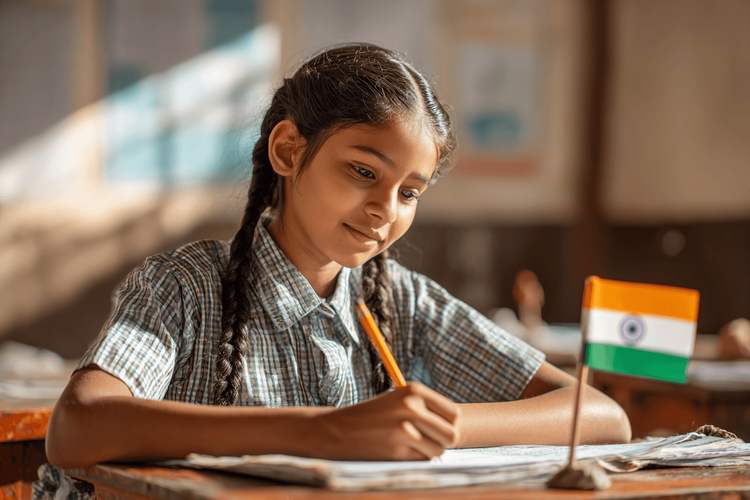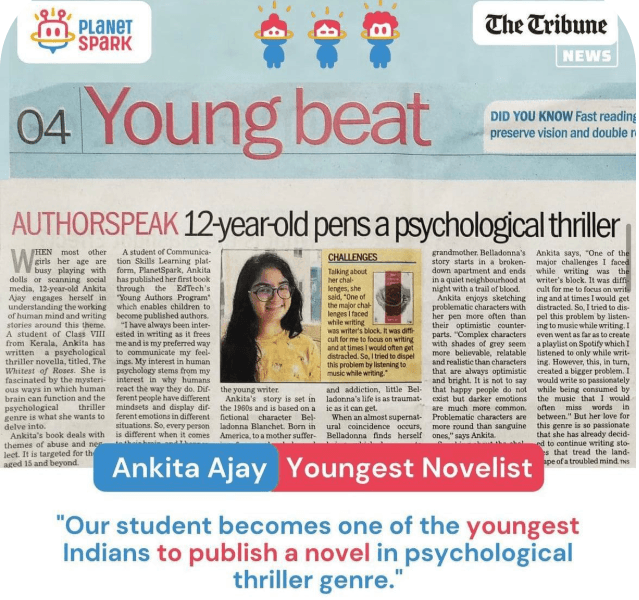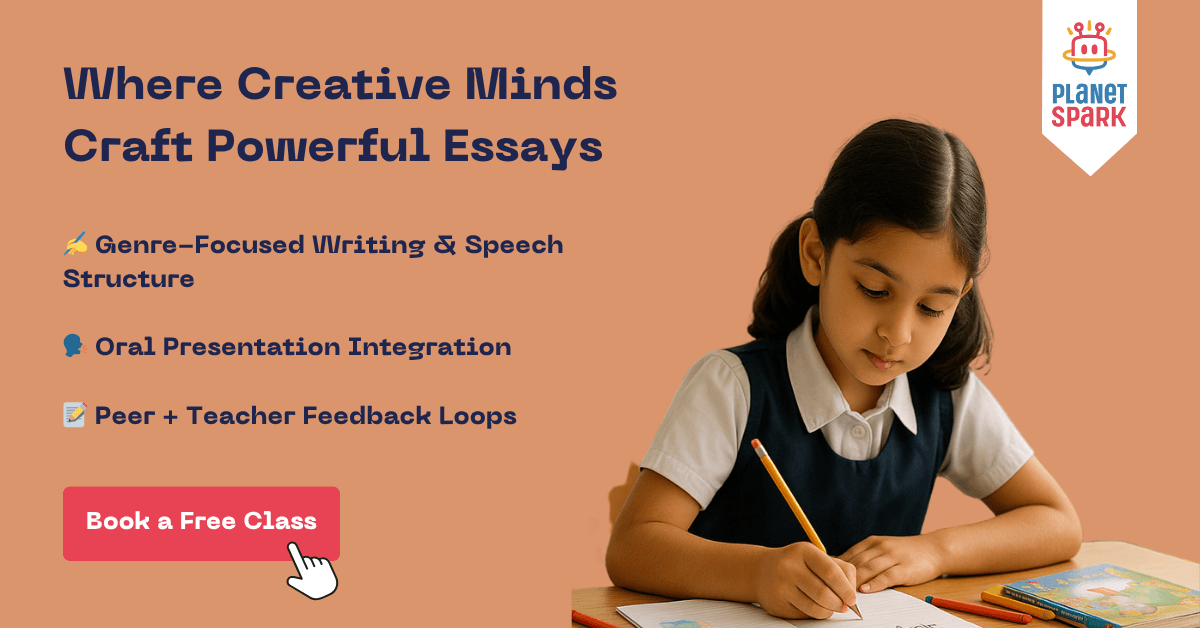Essay on Independence day - Sample and Tips for Students

What Makes a Great Independence Day Essay?
Whether you're a student preparing for a school competition or a parent helping your child with a class assignment, this blog provides a ready-to-use long-form essay along with tips to improve structure, expression, and originality. And if you’re wondering how to help your child become a confident writer, we’ll also show how PlanetSpark’s Creative Writing classes develop real writing skills across formats.
Essay on Independence Day
India’s Independence Day: Celebrating Freedom, Unity, and Courage
Introduction
Every year on the 15th of August, Indians across the globe come together to celebrate Independence Day. It is a day that commemorates the historic moment when India gained freedom from British colonial rule in 1947. But beyond the parades, flag hoisting, and patriotic songs, this day represents the long, difficult road to freedom, fought with courage, sacrifice, and unity. This essay explores the history behind Indian independence, the leaders and revolutionaries who led the way, the role of women, and how Independence Day inspires today’s youth.
The Historical Journey to Independence
British colonial rule began in the mid-18th century and expanded aggressively through the East India Company. Over the next 200 years, India’s resources were drained, its people oppressed, and its culture suppressed. The first organized challenge to British rule was the Revolt of 1857, led by figures like Rani Lakshmi Bai, Bahadur Shah Zafar, and Mangal Pandey. Though unsuccessful, it awakened nationalist sentiment across the country.
The 20th century witnessed a wave of large-scale civil resistance, including the Non-Cooperation Movement (1920), Salt March (1930), and Quit India Movement (1942), all of which shook the foundation of British control.
Freedom Fighters Who Changed the Course of History
India's independence is the result of the collective efforts of many great leaders and thinkers:
Mahatma Gandhi led with non-violence and truth. His philosophy of Satyagraha became a global model for peaceful resistance.
Jawaharlal Nehru envisioned a modern, democratic India and shaped the future of education, industry, and science.
Subhas Chandra Bose believed in armed resistance. Through the Indian National Army (INA), he inspired thousands to take up arms for freedom.
Sardar Vallabhbhai Patel was instrumental in uniting princely states post-independence, ensuring political integration of the country.
Bhagat Singh, Chandrashekhar Azad, and Ram Prasad Bismil chose the revolutionary path, sacrificing their lives in their early 20s for the cause of freedom.
The Role of Women in India’s Freedom Struggle
Women in India were not mere spectators in the fight for freedom, they were on the frontlines.
Rani Lakshmi Bai fought the British with unmatched bravery. In the 20th century, Sarojini Naidu broke stereotypes as a poet, speaker, and political leader. Kasturba Gandhi participated in civil disobedience movements alongside her husband. Aruna Asaf Ali fearlessly led protests and became a national icon during the Quit India Movement.
From organizing protests and nursing the injured to writing revolutionary literature, women proved that patriotism knows no gender.

Every child has a story to tell, PlanetSpark helps them shape it, polish it, and share it with the world. Book a Free Trial Class Today!
Different Political Movements and Parties That Contributed
While the Indian National Congress played a central role, other political and social organizations also contributed:
The Muslim League, initially working alongside Congress, later advocated for the creation of Pakistan.
Hindustan Socialist Republican Association (HSRA) believed in direct action and inspired a generation of young revolutionaries.
Ghadar Party, formed abroad, mobilized Indian diaspora for armed rebellion.
Despite differences in ideologies and methods, they shared one dream, a free India.
Partition and the Birth of Two Nations
The road to independence was not without tragedy. In 1947, India was divided into India and Pakistan, leading to one of the largest and bloodiest migrations in human history. Over a million people were killed and millions more displaced.
Still, amidst the chaos, the Indian spirit endured. On 26th January 1950, India became a republic, and its constitution came into effect, ensuring justice, liberty, and equality for all.
How India Celebrates Independence Day Today
Independence Day is marked by grand celebrations and solemn tributes:
The Prime Minister addresses the nation from the Red Fort.
Schools host cultural programs, parades, essay writing, and debate competitions.
Citizens proudly hoist the national flag and sing the national anthem.
It is also a day of reflection. What have we done to honour the sacrifices of our heroes? How can we contribute to a better India?
What Independence Means to Today’s Youth
For today’s students, independence is more than political freedom. It is the ability to learn freely, speak confidently, question thoughtfully, and dream fearlessly. Independence Day essays give young minds the opportunity to understand our past while shaping their role in India’s future.

How PlanetSpark Helps Children Write Powerful Essays
PlanetSpark’s Creative Writing Program for Grades 4–6 transforms students into thoughtful, expressive writers. The curriculum is genre-based, meaning children write across multiple formats, essays, poems, narratives, book reviews, and persuasive letters.
Lessons include:
Building suspenseful, humorous, and emotional writing
Writing personal reflections, opinion pieces, and news-style articles
Using poetic devices like similes, alliteration, and personification
Structuring essays with powerful openings, logical middles, and memorable conclusions
Write, Edit, Rewrite: Real Learning Happens Here
At PlanetSpark, writing doesn’t stop at the first draft. Students receive real-time editing support, peer feedback, and teacher guidance to improve their work.
They also get opportunities to publish their essays on PlanetSpark’s blog, e-magazine, and in co-authored anthologies. For a young writer, seeing their name in print is a huge confidence boost.
PlanetSpark helps children bring such historical figures to life in essays, story maps, and speeches, training them to write with depth and clarity. Book a Free Trial Today
Creative Tools that Stimulate Young Writers
To prevent writing fatigue or repetition, PlanetSpark uses engaging tools like:
Story dice to generate imaginative plots
Picture prompts to trigger descriptive writing
Role-plays where kids act as Nehru or Gandhi delivering a speech
Theme-based poems on topics like “What freedom means to me” or “India in 2050”
These activities nurture originality and critical thinking.
FAQs – Essay on Independence Day & PlanetSpark
Q1. What is the ideal length of an Independence Day essay?
It depends on your class or competition, but a detailed essay ranges from 300 to 1000+ words. This blog offers an extended 1100-word essay suitable for Grades 4–10.
Q2. What are must-include topics in an Independence Day essay?
Cover the freedom struggle, role of leaders and women, Partition, modern-day relevance, and personal reflections.
Q3. Can students use this essay in school?
Yes. Students can either use this as-is or rewrite it in their own words for better understanding.
Q4. How does PlanetSpark teach children to write essays like this?
PlanetSpark’s program focuses on structure, grammar, creativity, and expression. Children learn through guided lessons, feedback, and practice.
Q5. Will my child also learn how to speak their essay?
Yes. Writing is integrated with public speaking. Students are encouraged to present their essays aloud, improving fluency and confidence.
Q6. Can I see samples of my child’s writing?
Yes. Parents get access to reports and writing samples. Selected students also get featured on PlanetSpark’s publishing platforms.
Q7. What other writing formats do kids learn at PlanetSpark?
Children write poems, short stories, book reviews, acrostics, persuasive essays, and even speeches, all taught with genre-based lesson plans.
Final Thoughts
India’s independence was not gifted, it was earned. As young citizens, writing about it helps us reflect, understand, and value what we have today. A well-written Independence Day essay doesn’t just retell history, it gives it meaning from the perspective of today’s youth.
Want to help your child become a confident, creative, and structured writer?
Enrol in PlanetSpark’s Creative Writing Classes today and let their thoughts find powerful expression!
Personalized Communication Report
Record a video to get a AI generated personalized communication report for your child

Hi There, want to try these
tips for your child with
LIVE with our expert coach?
Let's check your child's
English fluency
